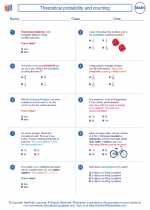Zero Slope
In mathematics, the slope of a line is a measure of its steepness. A zero slope indicates that the line is horizontal, meaning it neither rises nor falls as it moves from left to right.
Finding the Slope
The slope of a line can be found using the formula:
slope (m) = (change in y) / (change in x)
where (change in y) is the difference in the y-coordinates of two points on the line, and (change in x) is the difference in the x-coordinates of the same two points.
Zero Slope
When the slope of a line is zero, the line is horizontal. This means that for any two points on the line, the change in y-coordinates will be 0, resulting in a slope of 0. The equation of a line with zero slope can be written as:
y = b
where 'b' is the y-intercept of the line.
Graphing Zero Slope
Graphically, a line with zero slope is a horizontal line. It extends infinitely in both the positive and negative directions along the x-axis. The line never rises or falls, and all points on the line have the same y-coordinate.
Study Guide
Here are some key points to remember about zero slope:
- The slope of a line measures its steepness.
- A line with zero slope is horizontal.
- The equation of a line with zero slope is y = b, where 'b' is the y-intercept.
- Graphically, a line with zero slope is a horizontal line on the coordinate plane.
- The slope formula is used to calculate the slope of a line.
Understanding the concept of zero slope is important in various mathematical applications, especially in the study of linear equations and functions.
Practice identifying and graphing lines with zero slope to reinforce your understanding of this important concept.
.◂Math Worksheets and Study Guides Eighth Grade. Theoretical probability and counting

 Worksheet/Answer key
Worksheet/Answer key
 Worksheet/Answer key
Worksheet/Answer key
 Worksheet/Answer key
Worksheet/Answer key
